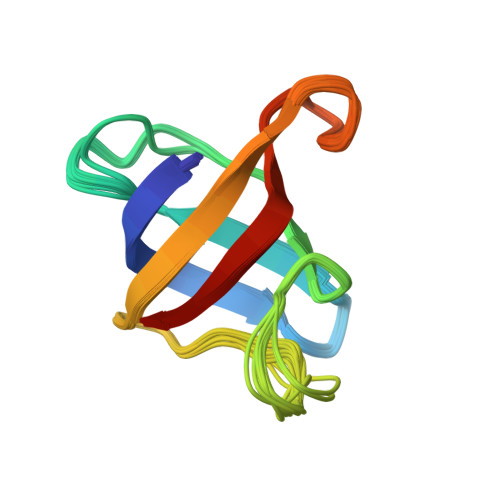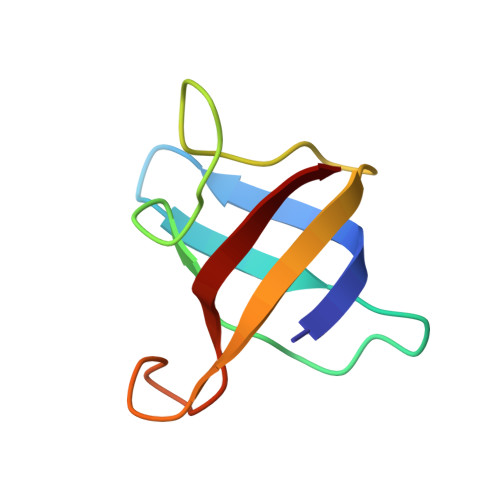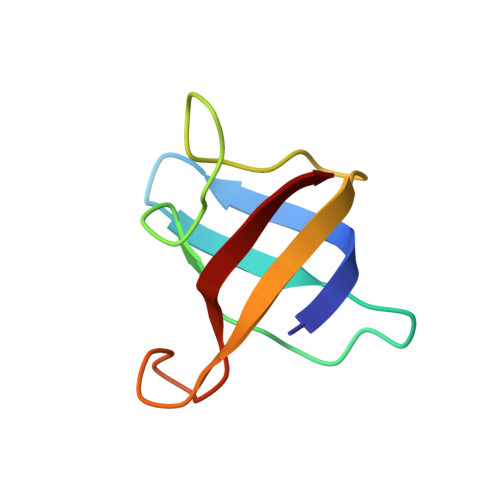Structure and flexibility of the thermophilic cold-shock protein of Thermus aquaticus.
Jin, B., Jeong, K.W., Kim, Y.(2014) Biochem Biophys Res Commun 451: 402-407
- PubMed: 25101648
- DOI: https://doi.org/10.1016/j.bbrc.2014.07.127
- Primary Citation of Related Structures:
2MO0, 2MO1 - PubMed Abstract:
The thermophilic bacterium Thermus aquaticus is a well-known source of Taq polymerase. Here, we studied the structure and dynamics of the T. aquaticus cold-shock protein (Ta-Csp) to better understand its thermostability using NMR spectroscopy. We found that Ta-Csp has a five-stranded β-barrel structure with five salt bridges which are important for more rigid structure and a higher melting temperature (76 °C) of Ta-Csp compared to mesophilic and psychrophilic Csps. Microsecond to millisecond time scale exchange processes occur only at the β1-β2 surface region of the nucleic acid binding site with an average conformational exchange rate constant of 674 s(-1). The results imply that thermophilic Ta-Csp has a more rigid structure and may not need high structural flexibility to accommodate nucleic acids upon cold shock compared to its mesophile and psychrophile counterparts.
Organizational Affiliation:
Department of Bioscience and Biotechnology, BMIC, Konkuk University, Seoul 143-701, South Korea.
















